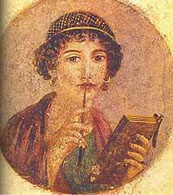
University of Washington
Human Centered Design & Engineering
Information Design HCDE 510
Professor David K. Farkas
Syllabus
Week 1
September 29 (Class 1)
Introduction to Course
Week 2
October 4 (Class 2)
The Early History of Literacy
Basic Communication Concepts
Read Schmandt-Besserat, "Signs of Life."
Review "Basic Communication Concepts" slide deck.
GoPost activity: Write a short bio of yourself.
Read Ding, "Genre Analysis of Personal Statements." (for October 11)
Note: I recommend that you read the assignments for each class in the sequence in which the items are listed on the syllabus.
October 6 (Class 3)
Information Design Concepts: Medium, Genre, Format, and Behaviors
Review "Medium and Genre" slide deck.
Review "Format and Behaviors" slide deck.
Read Chandler, "An Introduction to Genre Theory."
Read McCloud. "Follow that Trail (I Can't Stop Thinking #4)."
Week 3
October 11 (Class 4)
Traditional Information Design and New Directions
In-Class Workshop: Consumer Information Labels
Ding reading assigned on October 4.
Peruse Hartley, "Text Design," in Handbook of Research for Educational Communications and Technology.
Read Farkas & Farkas, "Graphic Design," from Principles of Web Design.
Browse the Web for basic information on graphic design.
Find at least two resources you can recommend to the class and post them on GoPost.
Read Larson and Farkas, "Indicating Impact: The Environmental Life-Cycle Rating Label."
Peruse LabelPatterns.org.
October 13 (Class 5)
Oral Communication and Slideware
The Infinite Canvas
Introduction to Prezi
Read Farkas, "A Heuristic for Reasoning about PowerPoint Deck Design."
Peruse Walker et al., "Visual-Syntactic Text-Formatting" (standalone PowerPoint file with notes).
Read Horn, "Knowledge Mapping for Complex Social Messes."
Examine Horn, selected knowledge maps and murals.
View Aguera y Aracas, Blaise. Photosynth Demo, TED Conference (March) 2007. http://www.ted.com/index.php/talks/blaise_aguera_y_arcas_demos_photosynth.html
Examine selected Prezi presentations.
Week 4
October 18 (Class 6)
NO CLASS Readings are assigned for October 20.
Read Tracey, Rugh, and Starkey, Sequential Thematic Organization of Publications (STOP).
Read Heller, "Tom Suzuki, 76, a Designer Who Transformed Textbooks, Dies."
Read French, "U.N. Congo Report Offers New View on Genocide."
Read Read Analore, "GM Uses Wiki to Tell Its Story."
For class on October 20: Be prepared to state 10 things that are interesting/unusual about the STOP report and 5 ways in which the STOP report challenges the Standard Expository Model.
October 20 (Class 7)
What is the Standard Expository Model?
Challenging the Standard Expository Model: The STOP Report
What is the future of the SEM?
Post your practice Prezi file to GoPost.
Week 5
October 25 (Class 8)
Changing Literacies
Read Berghel, "A Cyberpublishing Manifesto."
Read Nielsen's Alertbox for May 6, 2008: "How Little Do Users Read?"
Read Nielsen's Alertbox for August 23, 1998. "The End of Legacy Media (Newspapers, Magazines, Books, TV Networks)."
Read Cotton and Oliver, "Hypermedia Applications: Education."
Read Self, "What If Readers Can't Read?"
Read Wortham, "Shorter E-Books for Smaller Devices."
Peters, "For For New Yorker on iPad, Words Are the Thing"
Read The Onion, "Nation Shudders At Large Block of Uninterrupted Text."
October 27 (Class 9)
Document Production and Reuse
Intellectual Property
Read Fisher, "Moving from Single Sourcing to Reuse with XML DITA."
Read Farkas and Farkas, "An Introduction to Copyright Law."
Week 6
November 1 (Class 10)
Exam 1
November 3 (Class 11)
Hypertext and Modularity
Read Farkas, "Hypertext and Hypermedia."
Read selected articles from Keep, McLaughlin, and Parmar, The Electronic Labyrinth.
Explore Bernstein, Hypertext Gardens. Compare to PDF version.
Read Nielson's Alertbox for January 3, 2005, "Reviving Advanced Hypertext."
Read Raban, excerpt from review of The Atomic Bazaar by William Langewiesche.
Peruse the John Henry hypertext exercise.
Week 7
November 8 (Class 12)
Review Exam
Planning for Upcoming Assignments
Designing for Selective Reading
Peruse selected documents designed for selective reading.
November 10 (Class 13)
Guest Class Noah Iliinsky, "Designing Information Visualizations"
Readings to be announced
Week 8
November 15 (Class 14)
Multimedia
Virtual Reality
Peruse Steuer (adapted by Mok), "Interactivity."
Peruse the multimedia tutorial: University of Washington, Biological Information Handling. MS Windows install file
Read Snyder, "Online Video: The Book Was Better."
Read Ramaswami, "Best of Both Worlds."
Read Jackson and Fagan, "Collaboration and Learning within Immersive Virtual Reality."
Read Harrill, "Readers Become Part of the Action."
Read Billinghurst, Kato, and Poupyrev, "The MagicBook - Moving Seamlessly between Reality and Virtuality."
November 17 (Class 15)
Two-Minute Previews of Variation Projects (Also Posted to GoPost)
The Web and eBooks
Read Nielsen's Alertbox for August 29, 2011, "Transmedia Design for the 3 Screens (Make That 5)"
Read Bosman, "E-Books Fly Beyond Mere Text."
Read Rich, "Curling Up With Hybrid Books, Videos Included."
Read Wortham, "Shorter E-Books for Smaller Devices."
Week 9
November 22 (Class 16)
Adaptive/Intelligent Documents
Synthetic Interviews
Read Cawsey Cawsey, Grasso, and Paris, "Adaptive Information for Consumers of Healthcare."
Read Kiernan, "Multimedia Data Base at Carnegie Mellon Lets You 'Interview' Albert Einstein."
Read Marinelli, and Stevens,. "Synthetic Interviews."
Peruse the Synthetic Interview Studio website: http://www.etc.cmu.edu/projects/si-studio/team.html
Peruse the HCDE 510 Elvis Presley interactive interview (Team A and Team B).
Prezi Design Projects due
November 24
NO CLASS: Thanksgiving
Week 10
November 29 (Class 17)
Exam 2
December 1 (Class 18)
Class Discussion of Prezi presentations (posted to GoPost)
Variations Projects due
Week 11
December 6 (Class 19)
Presentations on Variations Projects Review of Exam
December 8 (Class 20)
Presentations on Variations Projects Course Wrap-Up